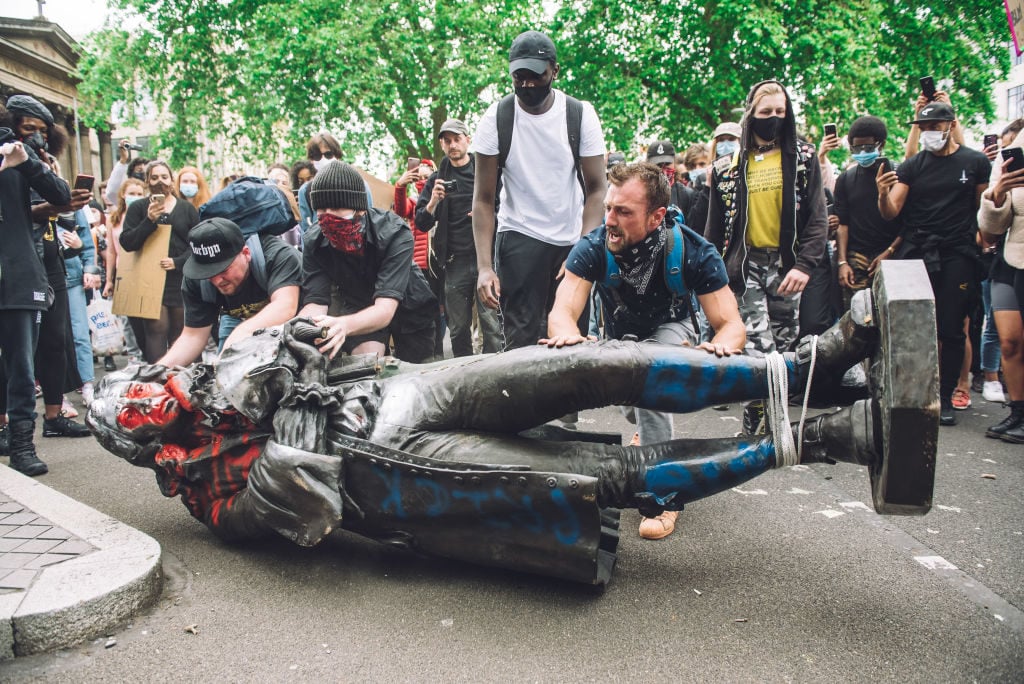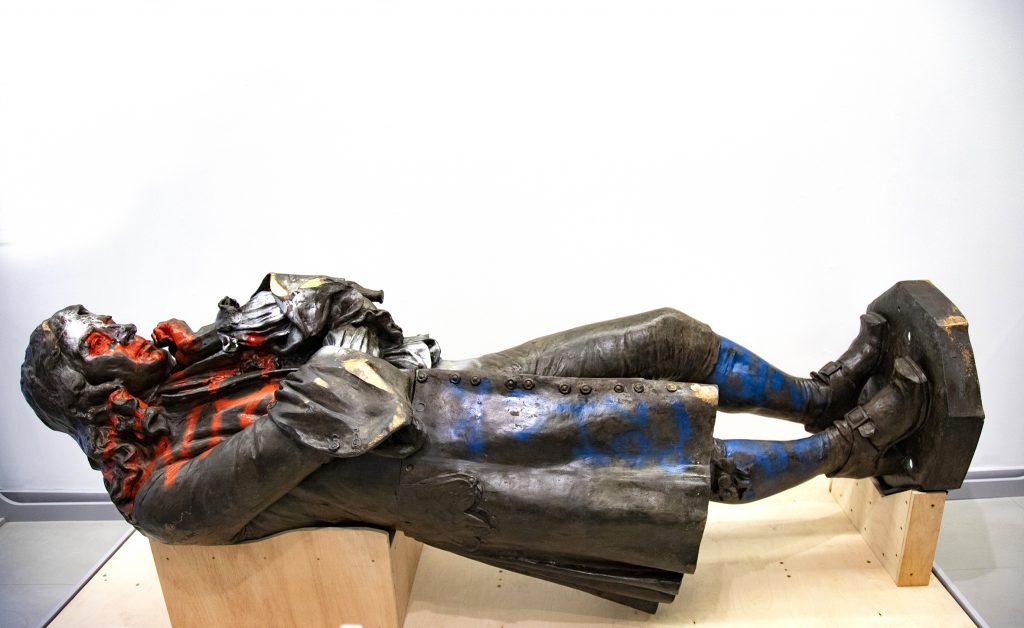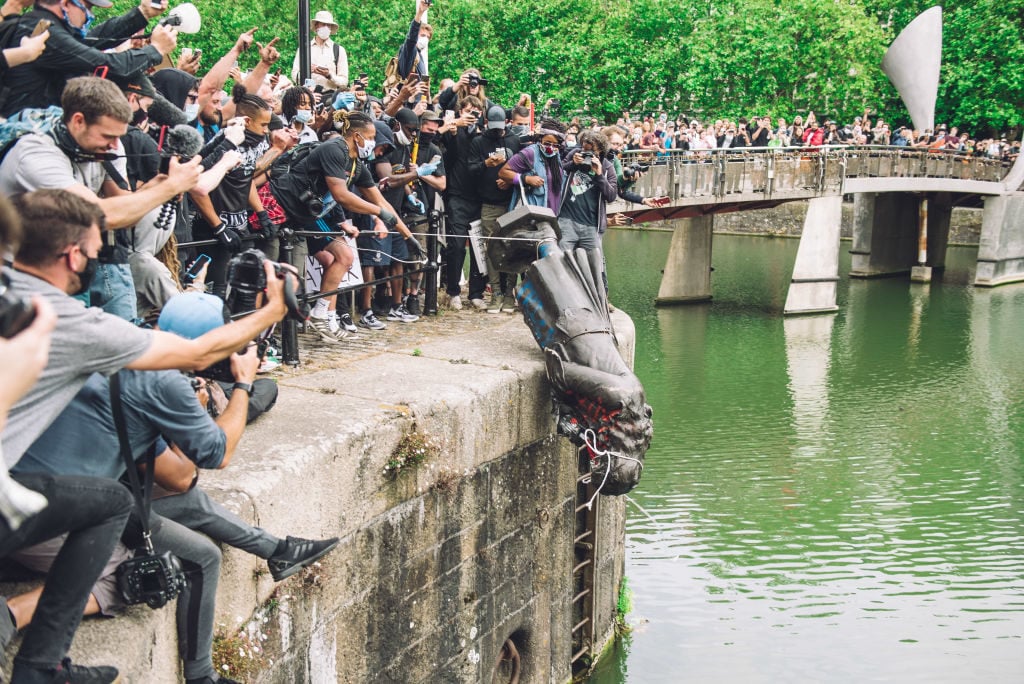Politics
A Year After It Was Toppled, a Statue of Slave Trader Edward Colston Is Being Temporarily Displayed in a English Museum
The statue is being displayed on its side, in part because damage done to its base prevents it from standing upright.

The statue is being displayed on its side, in part because damage done to its base prevents it from standing upright.

Naomi Rea

A statue of a 17th-century merchant and slave trader that was toppled almost exactly a year ago during the Black Lives Matter protests last summer in Bristol, England, will go on view at a city museum starting today, June 4.
The statue, which is displayed on its side in part because damage done to the object’s base prevents it from standing upright, is on view at M Shed, a part of Bristol Museums, in a display titled “The Colston Statue: What Next?.”
The exhibit includes placards from the protest that led to the toppling, as well as a timeline of events. The sculpture is still covered in the graffiti that was applied to it during the protests, and conservators have even stabilized the spray paint to prevent flaking.

The statue of Edward Colston at M Shed. Courtesy Bristol City Council.
“June 7, 2020 is undoubtedly a significant day in Bristol’s history and had a profound impact not just in our city but also across the country and around the world,” Bristol Mayor Marvin Rees said in a statement, referring to the date on which it was knocked down.
The long-term future of the statue is unclear, and a commission established following the protest is asking the public for its input. Possibilities include removing the sculpture from public view, including it in an exhibition about the transatlantic slave trade, or restoring it to its plinth.
“The future of the statue must be decided by the people of Bristol and so I urge everyone to take the opportunity to share their views and help inform future decisions by taking part in the survey,” Rees said.
During the protests, the figure was pulled off its plinth, defaced, dumped into a harbor, and fished out by the local council a few days later.

The statue of Colston being pushed into the river Avon. Photo by Giulia Spadafora/NurPhoto via Getty Images.
The statue, erected in the 19th century, included a plaque identifying Colston as “one of the most virtuous and wise sons” of the city, where he endowed schools, hospitals, and almshouses.
Efforts to install a plaque providing context about Colston’s links with slavery ended in a stalemate over the wording.
His wealth was built in part from the Royal African Company, whose ships transported some 84,000 enslaved people from Africa to the Americas between 1672 and 1689.